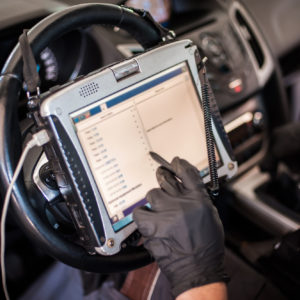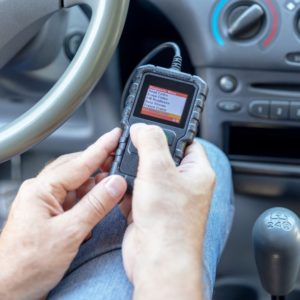Some diesel engines are built with an injector (HEUI) fuel system that has an injector control pressure (ICP) sensor to monitor oil pressure. Readings from the ICP sensor are used by the powertrain control module (PCM) to operate the fuel injectors and determine the right amount of injection control pressure. If the PCM receives a signal indicating that oil pressure is too low, it will log a P2990 code.
What Does the P2990 Code Mean?
Diagnostic trouble code (DTC) P2990 stands for “Injector Control Pressure Too Low.”

HEUI fuel systems have an ICP sensor and ICP regulator that form a closed-loop fuel pressure control system. The ICP sensor acts as a variable capacitor sensor that’s supplied with a five-volt reference signal by the PCM. In return, the ICP sensor sends a linear analog voltage signal to the PCM that indicates oil pressure in an injection rail.
If the PCM fails to retrieve information from the ICP sensor or notices that the oil pressure is too low, it will set an estimated injection control pressure and log a P2990 trouble code.
Note: The definition of code P2990 might be different depending on the vehicle manufacturer. Consult the appropriate repair manual or repair database for the exact code definition.
What are the Common Causes of the P2990 Code?
- Low engine oil level
- High-pressure oil pump failure
- Wiring issues
- ICP sensor failure
- PCM issues

What are the Common Symptoms of the P2990 Code?
How to Diagnose the P2990 Code
DTC P2990 is a generic powertrain code that can be logged in diesel engines with on-board diagnostics (OBD) systems. While this might be the case, vehicle specifications can alter the diagnostic and repair process. If you’re not familiar with the process of identifying trouble codes and using certain diagnostic tools, it might be best to leave the job to a professional.
But if you know how to work your way around diagnosing DTCs, then you can go ahead and do it yourself.
How to Fix the P2990 Code

Attempting to fix a P2990 trouble code can be tricky and frustrating especially if it’s your first time dealing with one. Without the right tools and know-how, trying to resolve this trouble code might lead to more repairs down the road if done incorrectly. Under these circumstances, it’s best to have your vehicle checked by a certified professional.
If you’ve had enough experience dealing with DTCs, then you probably know that there’s no magic bullet that can resolve codes for all makes and models. Before working on your vehicle, make sure you’re equipped with the right tools and information. Guides like those from Chilton or an ALLDATA subscription contain vehicle-specific repair information, so you might want to check those out before you begin.
Any information provided on this Website is for informational purposes only and is not intended to replace consultation with a professional mechanic. The accuracy and timeliness of the information may change from the time of publication.


















